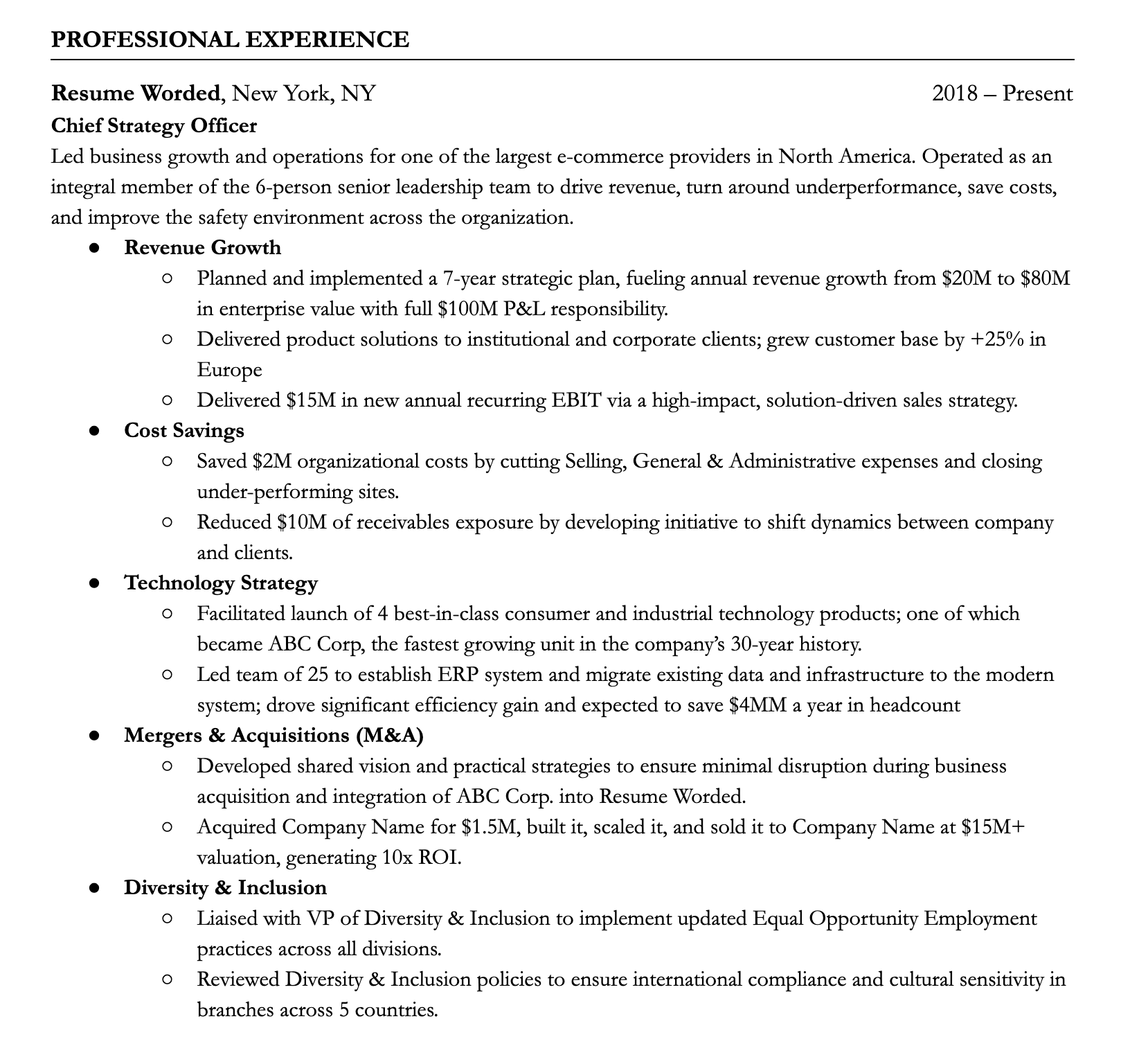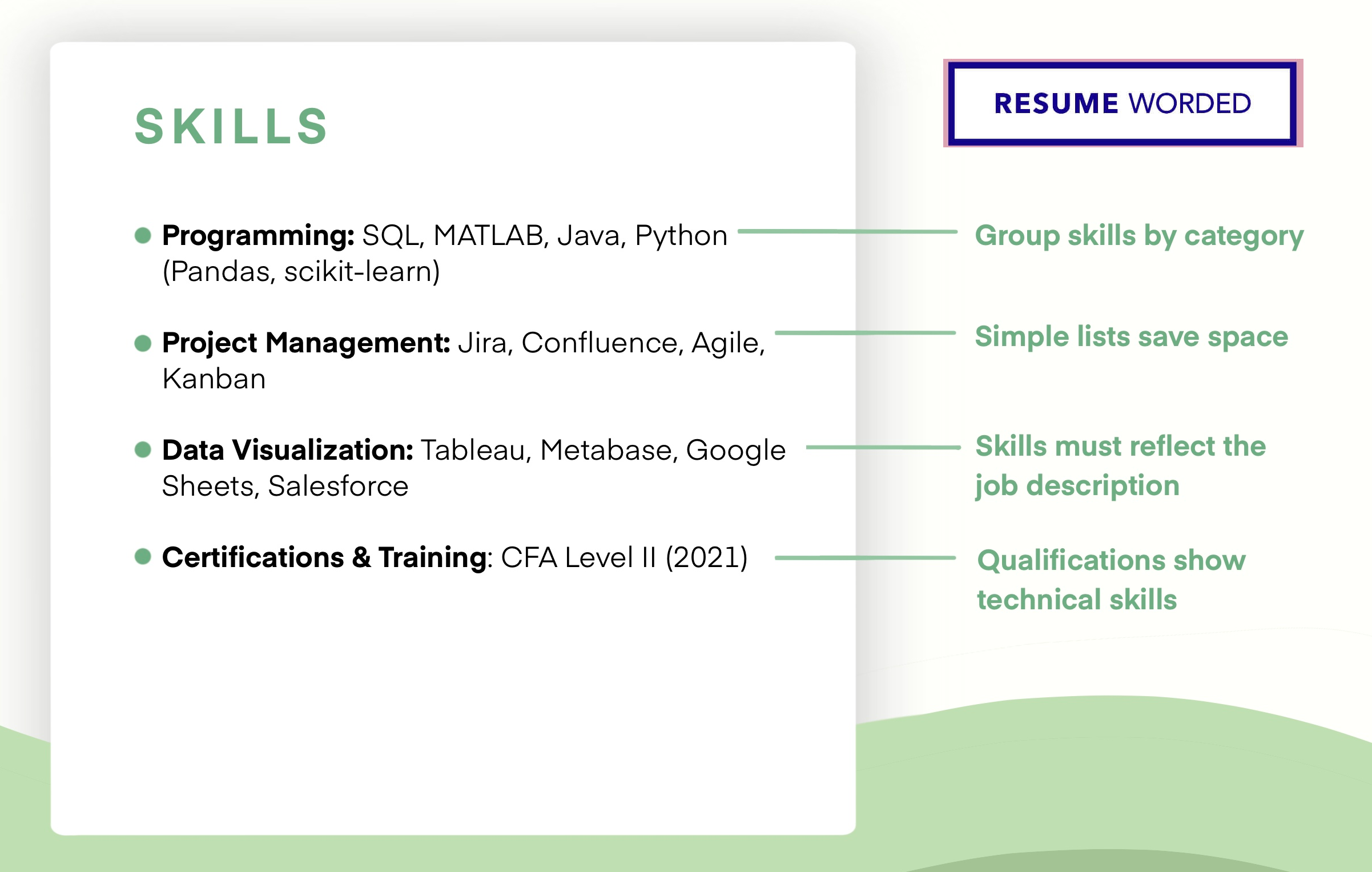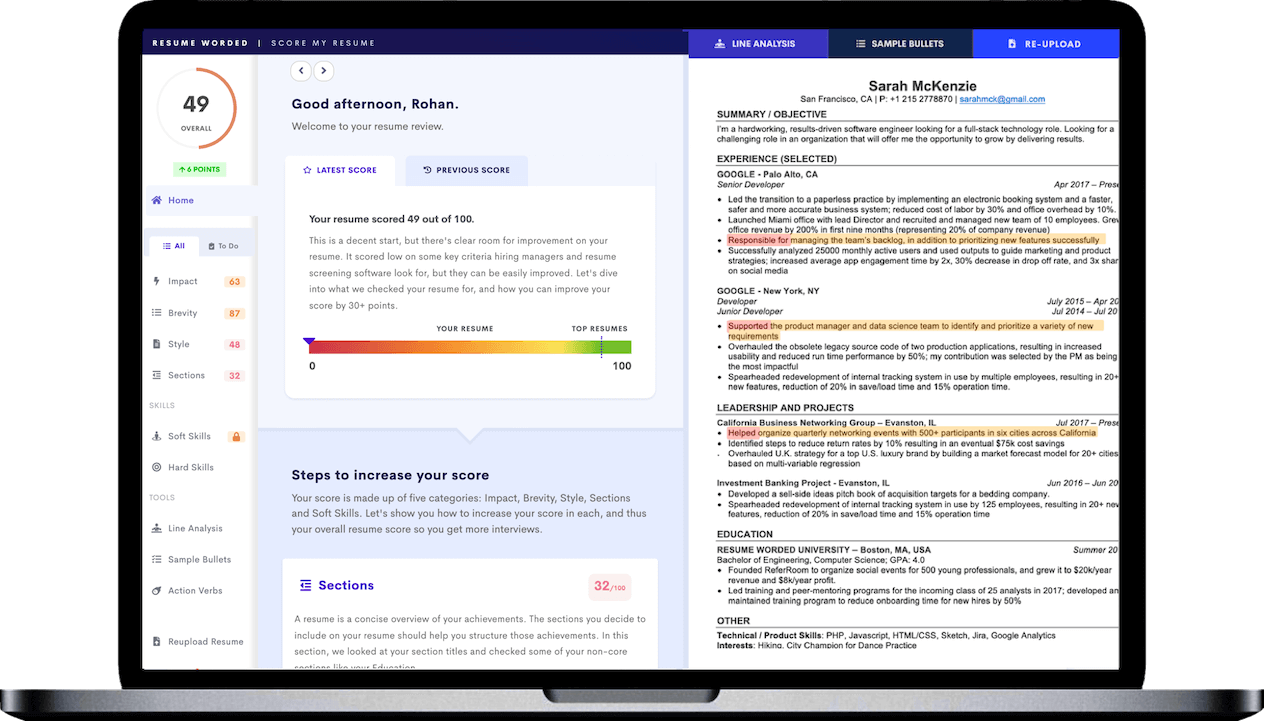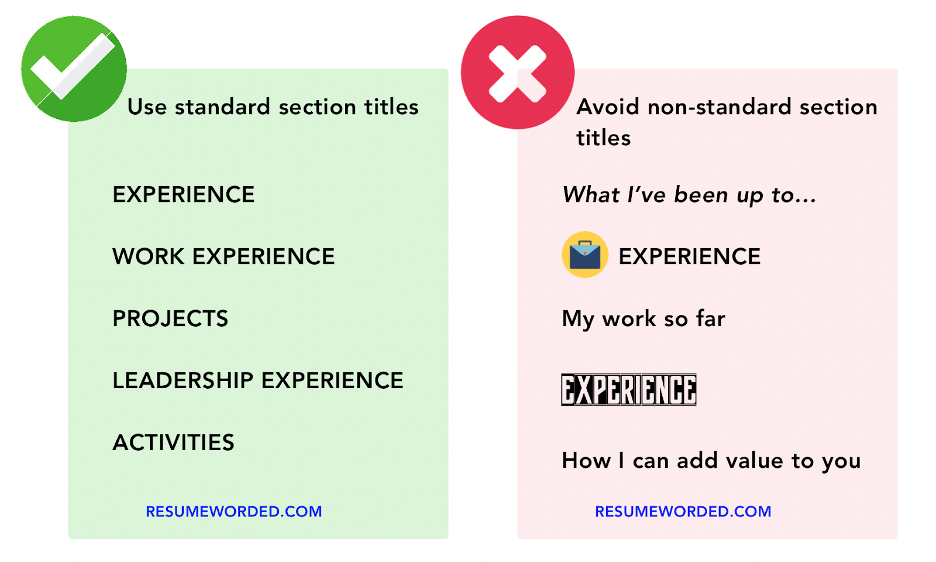Welcome to our resume guide for executives and senior-level job seekers. In this detailed guide, learn the ins and outs of writing a senior level resume, including executive resume templates and examples.
Table of contents:
- Overview, templates and key tips [you are reading this here]
- Executive resume summary
- Work experience and bullet points on executive resumes
- Skills section on executive resumes
- Education, optional sections, and additional executive resume tips are at the bottom of this page too!
What to know when writing your executive resume
When it comes to resume writing, there’s no “one size fits all” solution. Which means that the resume you used to get hired probably isn’t going to land you that promotion you’ve been eyeing, and the template you’ve been using since you graduated definitely isn’t going to cut it when you’re applying for senior level roles.
The reality is, executive resumes use a different format — and follow different rules — from standard resume templates. To illustrate the point, let’s have a look at some senior level resume templates.
Executive resume templates
Before we dive in, let's show you what a template looks like — with specific recruiter highlights to give you a sense of what works on this resume (we'll dive into each of these at different parts of this resume guide too).

The first thing you’ll notice is that this template is longer than the standard one-page resume you’re probably used to. Director level resumes can get away with including a lot more detail because of the depth of experience they’re trying to convey. For positions older than 10-15 years, executive recruiters recommend listing them in a truncated format that omits the bullet points.
Here, we’ve also divided accomplishments from your most recent role into core competencies using keywords hiring managers are looking for.
Executive resume template #2
While it's common to have a two-page resume like the one above, you can also use a shorter resume if you prefer. Just make sure you include your most impressive achievements.

This senior management resume template keeps the emphasis where it needs to be — on high-level professional accomplishments. Other sections of your resume, including older positions, education, skills, and certifications, should take up no more than half a page.
Want more templates? See our resume templates for executives. You can download the Google Doc and Word templates there too.
Executive resume format and key sections
Now that we’ve seen what senior level resumes should look like, let’s break down what you need to know to write your own.
Executive summary
An executive summary should be the first thing on your resume, underneath your name and contact details. Your executive summary can include:
- The title of the job you’re applying for
- A short paragraph explaining the scope and context of your work experience
- 2-4 of your most impressive accomplishments
Think of your executive summary as a career highlights section — it should be relatively brief but detailed enough to convey that you have the right skills and experience for the job.
For most applicants, resume summaries are optional, but recruiters highly recommend them for executive resumes. Because your resume is likely to be longer and more detailed, a summary gives recruiters a quick overview of your most important accomplishments so they can see at a glance that you’re qualified for the role.
Personalize your resume summary by tailoring the skills and accomplishments you list to match the job requirements. Adding a title or headline is another good way to impress recruiters and bypass Applicant Tracking Systems at the same time.
Want to dive in? Read how to write an executive summary, or a summary for executives.
Work experience
Most of the space on your executive resume should be dedicated to your professional experience. Start with a short introductory paragraph explaining your role and split your accomplishments into key skills with distinct subheadings.

The more recent the role, the more detailed your accomplishments should be. Your most recent position might contain upward of 10-15 accomplishments split across different categories, while older roles might only have 1-2.
What to do about older positions
For any positions older than 10-15 years, either leave them off your resume entirely or condense them by listing only the company name, your role, and the dates.
Bullet points
Here’s what you need to know about crafting high-impact resume accomplishments in your work experience section:
- Start with a strong action verb.
- Focus on accomplishments, not responsibilities.
- Include numbers and metrics to quantify your achievements.
- Be specific. Avoid vague buzzwords like “effective” or “various.”
- Lead with your most relevant accomplishments — don’t bury your strongest achievement at the bottom of the page.
Want to dive in? Read how to write a work experience for executives. You'll also learn how to write bullet points for an executive resume.
Education
Resumes for experienced professionals don’t need a detailed education section. List any degrees in reverse chronological order (most recent first), including the name of the school you attended, the degree(s) you attained, and your major. You can omit any extra information, like graduation dates, coursework, and GPA.
Skills
You can list your hard skills in a relatively short section at the end of your resume. Stick to high-level leadership skills and core industry-specific competencies.
Your skills section is essential to getting past Applicant Tracking systems, which will automatically scan and weed out resumes without essential keywords — for example, the word “financial” in a CFO resume. Here are some of the key skills executive recruiters are looking for:
- Business Development
- Change Management
- Diversity & Inclusion
- Revenue Generation
- Profit & Loss Management
- Mergers & Acquisitions
- Stakeholder Relations
- Cultural Leadership
- Contract Negotiation
- Fiscal Accountability
To make a big impact in a small amount of space, use subheadings for specific skills and stick to 3-4 categories that are more relevant to the role you’re applying for.
Ready to get started? Read how to include essential skills for executive resumes.
Optional sections
Because executive resumes should mainly focus on your work experience and core competencies, you don’t need to dedicate a lot of space to additional information. That said, it can still be a good idea to include one or two optional sections toward the end of your resume, especially if you can point to activities that are highly regarded or add leadership experience. These might include:
Board memberships. Sitting on a board of directors can add prestige and credibility to your resume, especially if you were involved with a prominent organization or one related to your current field. List the name of the organization, your role, and the dates you served.
Professional affiliations. Similarly, membership in a well-known professional association — especially if you were heavily involved or in a leadership role — can deserve a place on your resume. List the name of the association and whether your membership is current.
Certifications. Only list these if they’re relevant to your current role. If you hold a qualification that’s highly recognizable or essential in your industry, consider highlighting it in your executive summary as well.
Volunteering. In most cases, volunteering doesn’t fit on an executive resume. However, other types of community involvement can go at the bottom of your resume. In particular, highlight leadership roles and other industry-relevant activities.
Key tips for executives
If you’re updating an existing resume rather than writing one from scratch, here are some key things to keep in mind.
Executive resumes look different
Struggling to showcase your leadership potential while keeping your resume under one page? There’s a reason for that. Executive resumes are typically longer two-page documents featuring additional sections and a more extensive work history. Here’s how to update your mid-level resume to an executive resume format:
- Split your work experience into subheadings reflecting core competencies.
- Include more bullet points for your current or most recent role.
- Leave off jobs older than 10-15 years.
- Include additional sections as relevant — for example, board memberships, professional affiliations, certifications, and community involvement.
Stress leadership and management experience
Executive roles require leadership above all else, so make that the focus of your resume. Here are some quick tips:
Use keywords in your resume title and headline. Your resume title should reflect the title of the job you’re applying for, while your headline can contain core competencies or similar roles you’ve held in the past.
Focus on management experience in your summary and bullet points. Choose accomplishments that show leadership and related skills, and put your most relevant achievements at the top of your resume. If a recruiter only spends a few seconds skimming your resume, they should still walk away with the sense that you’re a potential fit.
A good way to check if you’ve chosen the right accomplishments that show leadership and related skills, is to upload your resume to the tool below — it’ll tell you if your resume summary and bullet points show enough of the management skills that hiring managers and recruiters look for.
Choose skills that speak to your leadership ability. Your skills section is a small but powerful part of your resume, so make every word count.
If you’re unsure what skills to add to your skills section, search for the job using the tool below. It’ll give you a list of skills relevant to the job. For example, search for a job like Chief Financial Officer, or other executive positions and it’ll give you a list of skills required for the role.
Size matters
When it comes to leadership roles, the scope of your experience is as important as the details. That’s not to say that you can land a C-level position at a Fortune 500 company if you’ve only ever helmed 10-person startups, but either way, make sure you start your resume by explaining the context of your work experience.
Emphasize promotions
You may be near the top of your field now, but recruiters will want to know how you got there. Here’s how to emphasize that you worked your way to the top:
- Show progression in your job titles. Bold titles that show obvious progression, like Vice President -> Director -> Managing Director.
- Use leadership-centric language that shows increased responsibility, like “Led,” “Drove,” and “Spearheaded.”
- Use bullet points to highlight promotions. If you were promoted ahead of schedule, say so.
Use metrics
Hiring managers want to see the impact of your accomplishments on a company’s bottom line. Here are some good metrics to use in your resume:
- Company or team size
- Number of locations
- Revenue generated
- Managed budget
- Money saved
- Increased throughput
- Project complexity, scale and duration
Always use concrete numbers when you can. These don’t need to be exact — a reasonable estimate is fine.










